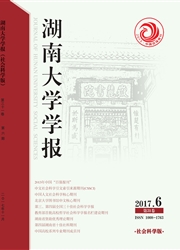

 中文摘要:
中文摘要:
在混合分布假说理论的基础上,根据Jone等(1994)的研究成果将成交量划分为成交次数和平均交易头寸,并考虑已实现波动率的跳跃和非对称性特征,构造了量价关系的基础模型、连续和跳跃波动量价关系模型及量价关系非对称模型,并利用沪深300股指期货高频数据分别对各模型进行实证分析。研究发现沪深300股指期货成交量与价格波动之间表现明显的正相关关系,成交量、成交次数及平均交易头寸对连续和跳跃波动都有明显的正向影响,下偏已实现半方差较上偏已实现半方差包含更多的市场波动信息,平均交易头寸作为量价关系背后的主要驱动因子,可以更好地解释市场波动。
 英文摘要:
英文摘要:
Building on the Mixture Distribution Hypothesis, this paper separates the trading volume into number of trades and average trade size in line with Jone, et al. (1994), constructs the basic volume-price relation model, the volume-price relation model with continuous and jump volatility, and the asymmetric model on the volume-price relation to account for the realized volatility and the asymmetric features, and uses high frequency data of the CSI 300 stock index futures to empirically validate these models. The findings show that there exists a significant positive correlation between the trading volumes of the CSI 300 stock index futures and the price volatility; the trading volume, the number of trades and the average trade size all have a positive effect on the continuous and the jump volatilities; the downside realized semi-variance includes more information on volatility than does the upside realized semi-variance; and the average trade size, introduced as the primary driving factor behind the volume-price relation, can better explain the volatility on the market.
 同期刊论文项目
同期刊论文项目
 同项目期刊论文
同项目期刊论文
 Learning, Pricing, Timing and Hedging of the Option to Invest for Perpetual Cash Flows with Idiosync
Learning, Pricing, Timing and Hedging of the Option to Invest for Perpetual Cash Flows with Idiosync A New Method for Setting Futures Portfolios’ Maintenance Margins: Evidence from Chinese Commodity Fu
A New Method for Setting Futures Portfolios’ Maintenance Margins: Evidence from Chinese Commodity Fu The expected discounted penalty function for two classes of risk processes perturbed by diffusion wi
The expected discounted penalty function for two classes of risk processes perturbed by diffusion wi Cross-correlations between WTI crude oil market and U.S. stock market: A perspective from econophysi
Cross-correlations between WTI crude oil market and U.S. stock market: A perspective from econophysi Utility-Based Pricing, Timing and Hedging of an American Call Option under an Incomplete Market with
Utility-Based Pricing, Timing and Hedging of an American Call Option under an Incomplete Market with Almost Everywhere Convergence of Riesz Means Related to Schrodinger Operator with Constan Magnetic F
Almost Everywhere Convergence of Riesz Means Related to Schrodinger Operator with Constan Magnetic F Correlation structure and dynamics of international real estate securities markets: A network perspe
Correlation structure and dynamics of international real estate securities markets: A network perspe Optimal Proportional Reinsurance and Investment Problem with Constraints on Risk Control in a Genera
Optimal Proportional Reinsurance and Investment Problem with Constraints on Risk Control in a Genera On the expected discounted penalty function for the classic risk model with potentially delayed clai
On the expected discounted penalty function for the classic risk model with potentially delayed clai 期刊信息
期刊信息
